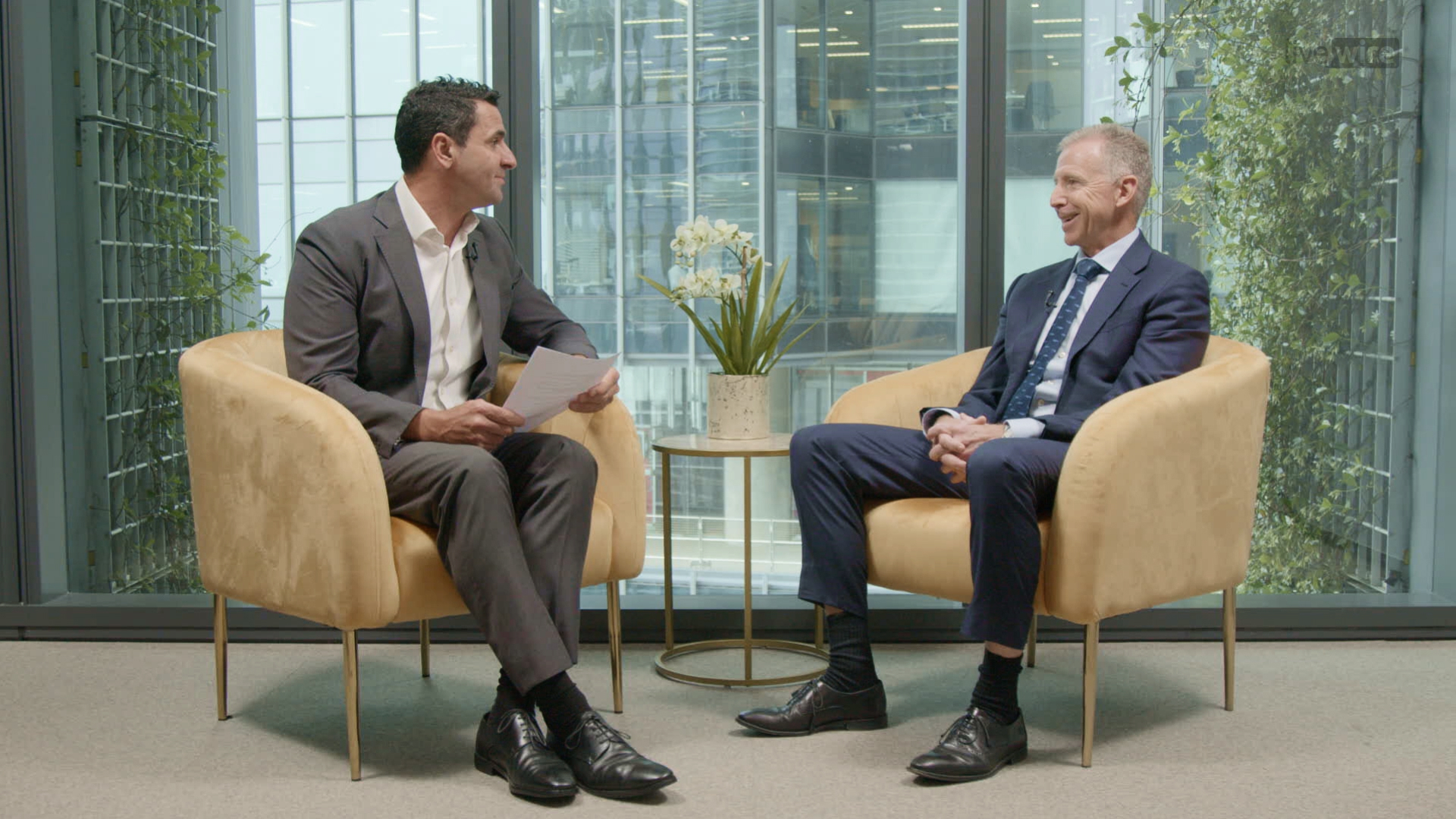3 factors that matter for investors seeking reliable returns on the ASX
As investors, we frequently hear the importance of having a process and sticking to it. But how do you ensure that you stay true to that process and apply it consistently across your investments?
Building a repeatable, consistent process has become an obsession for Angus Gluskie, the Managing Director of Whitefield (ASX: WHF), one of Australia’s oldest listed investment companies.
The arrival of electronic data and the supporting infrastructure in the early 2000s sparked his curiosity and led to the development of a quantitative investment process.
“We set about building a quantitative infrastructure, meaning an infrastructure that allows us to ingest electronic data quickly and efficiently, and to make then sense of all the data that was becoming available in investment markets and be able to build or utilise that in the delivery of our strategy in the best way possible.”
Gluskie explains that the job he is seeking to do is the same fundamental company analysis that other investors are doing, he is just doing it in a way that is scalable, repeatable and consistent.
The process Gluskie has developed draws on thousands of individual data points combined to inform a view of the opportunity presented by each individual stock. While no single data point is more important than the other, Gluskie explains that he has three ‘buckets’ used to group many of the data points captured by the Whitefield model.
These three factors measure quality, earnings, and value, and Gluskie highlights Goodman Group (ASX: GMG) as a stock that ranks well for two of them.
Gluskie says the business has a good industry position, low gearing, and an established track record of generating returns. However, these attractive characteristics haven’t been lost on investors, and the stock is not cheap, meaning returns are likely to be mid-level rather than exceptional.
In this episode of The Pitch, Gluskie explains the value of a quantitative investment approach to fundamental research and why a long-term approach to investing will help you avoid one of the most common traps in markets.
Watch the video by clicking on the player above or read an edited transcript below.

Edited Transcript
LW: Whitefield has a quantitative system that it uses to build its diversified portfolio. Could you talk me through the process?
Gluskie: I guess the concept first came out for us in the early 2000s where we were looking at the electronic data that was becoming available and the data infrastructure that people could utilise. We thought they were going to both be vital ingredients in terms of running a successful process of investment management.
We set about building a quantitative infrastructure, meaning an infrastructure that allows us to ingest electronic data quickly and efficiently, and to then make sense of all the data that was becoming available in investment markets and be able to build or utilise that in the delivery of our strategy in the best way possible. That was our initial thought that started the process, but it is worth recognising that when we do that exercise, we're still performing the task of fundamental stock analysis. We're just utilising data and quantitative tools to do the process efficiently, rigorously, and consistently.

You've talked there about the quantitative approach. Is that replacing fundamentals or day-to-day stock picking that many fund managers would be familiar with?
No. Essentially, we're very much looking at a number of the same characteristics, but we're just doing it with very consistent measures, and lots of data in the background. It's an educated way of doing the same exercise.
Have you got some evidence or data to support that it adds value and it's a better way of doing it?
It's certainly been working for us. But, interestingly, there have been some studies done overseas where they've tried to look at whether quant fund managers perform better or worse than non-quant managers. The studies show it's much of a muchness.
I think, perhaps, some of the flaws in doing that kind of exercise are failing to recognise that, look, within the quant space, you'll have better and poorer managers, and within the fundamental space, you'll have better and poorer managers. Equally, it's hard to work out which side of that equation people sit on.
For example, we're using quantitative tools, but we're doing an exercise of fundamental analysis. So are we really a quant manager or are we a fundamental manager? I think thinking it through logically, probably the most important thing is that the manager is using tools that are suited to the delivery of the strategy and its objectives.
Could you talk about the quant factors that you think are most important in getting those reliable returns?
It's worth thinking, of course, that a great part of the value-add from a quant process is actually the process itself, the consistency, the reliability of the measurement process, and the usefulness of the data that goes in the backend. So, the value add is as much the process as it is the particular factors or metrics that we're measuring.
And, equally, we're using thousands of metrics in terms of our process for assessing stocks. It's very hard to draw out any one individual metric and say that's more important than others. However, look, we do group our metrics into broad factor groupings, and the factor groupings are quite logically the groupings that relate to how investors think about and interpret stocks anyway.
For example, our major factor groupings are valued, so we use lots of metrics to then assess both where the value is and also how it might revert. We use a great number of metrics to assess the quality or robustness of a business, and, also, we're using metrics to assess how the earnings are likely to develop for a business going forward.
So, collectively, each of those things gives us insight into pretty important elements as an investor. At the end of the day, we're doing the same equation that all investors are. We're looking to buy businesses for reasonable prices, where they can generate earnings over future years that are at least as good as the expectations baked into the price, and ideally somewhat better.
Could I get you to bring that quality value earnings framework to life with an example?
Maybe a current example would be Goodman Group (ASX: GMG), so involved in industrial property.
Our quality metrics suggest that we rate Goodman quite highly on our quality metrics, suggesting that they've got a moderate-to-low debt load for the industry in which they operate, and, equally, that they're reasonably successful and well-competitively positioned within that industry of industrial property. From an earnings perspective, they've done well through their developments over recent years, and the expectations are that in the near and medium term, they're likely to continue to be able to produce good earnings out of that development pipeline.
But from a valuation perspective, people like the stock based on those fundamental elements, and it's expensive on several metrics. And so when we combine that, it suggests to us that, while the stock is expensive, it's somewhat justified, but it means it could form a reasonable investment generating, probably, a mid-level rate of return for an investor.
So, earnings relative to expectations, not about earnings continuing to increase over time. So, you are willing to buy a cyclical stock that might have depressed earnings at one point in the cycle, but if they're better than expectations, you're happy to own it?
It's a really important point, that one. Conditions, or one of the things that come out as you look through history and stock performance, is that it's not so much the information that's known today that determines the outcomes of that stock in future, it's the second derivative all the time.
It's how a company can perform relative to those expectations, which are based on all the things we know today. It's a reasonably fickle equation to judge, and it's why, often, it's quite handy to have a quant framework that's doing that process on a routine basis.
What are some of the traps or mistakes that people need to be aware of, and could you maybe bring them to life with an example?
I think investors often are too quick to think markets might be calamitous. The reality is very calamitous markets are rare. Equally, one thing that history shows us is that markets, even while they will experience dips, larger or smaller, dips are always followed by recoveries, and sometimes those recoveries can occur very rapidly after the dip in the first place.
I think just understanding that markets are relatively resilient is a pretty important lesson for investors, and it certainly, then, suggests to us that patient, long-term investing can be quite a handy way to navigate those kinds of issues.
Whitefield Industrials is the longest operating LIC in Australia
Whitefield Industrials (WHF) is the longest operating listed investment company (LIC) in Australia, established in 1923. It holds a diversified portfolio of Australian industrial shares, including all sectors of the ASX 200 except the mining and resources sector.
Learn more here or please send us an email to hello@whitefield.com.au.
3 topics
2 stocks mentioned
1 fund mentioned


